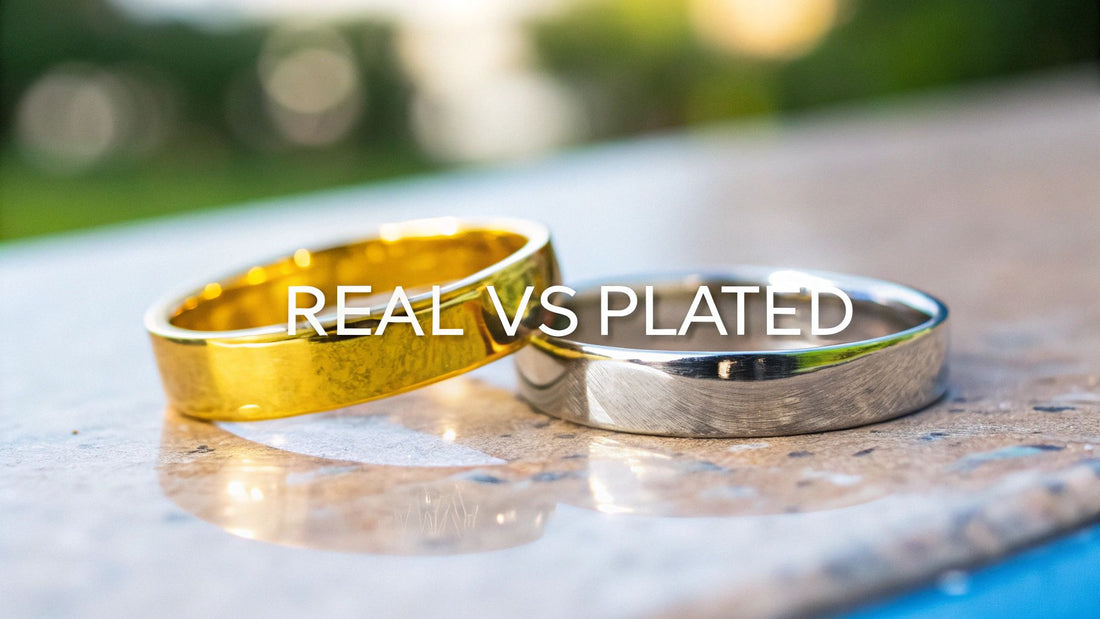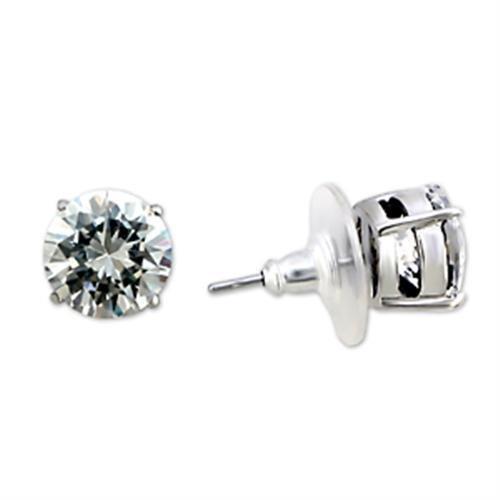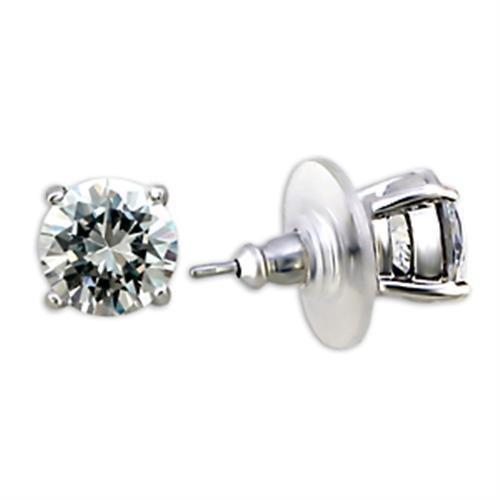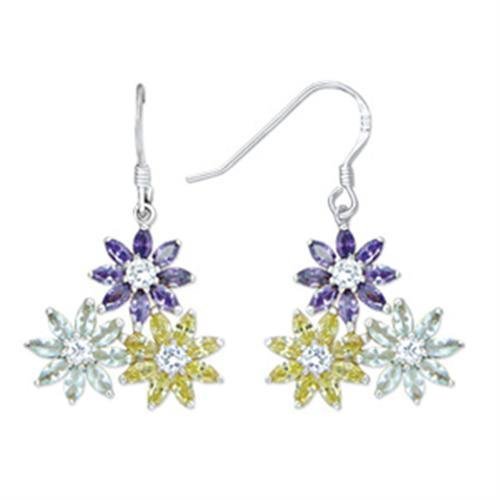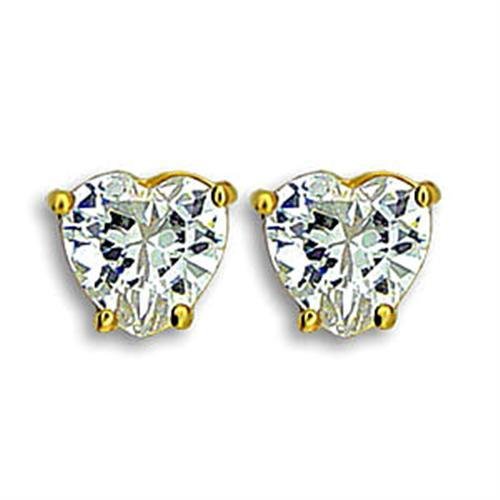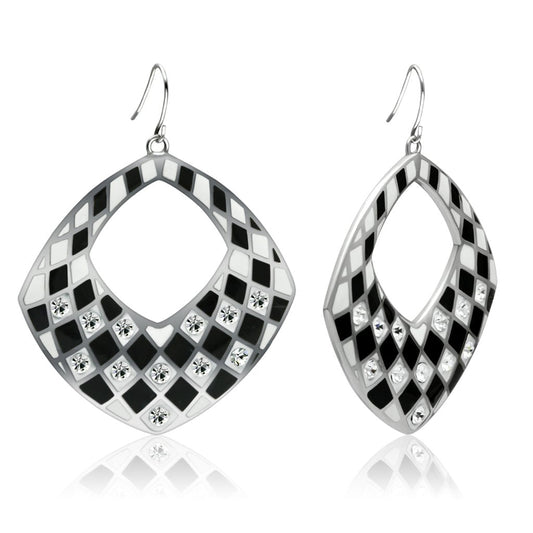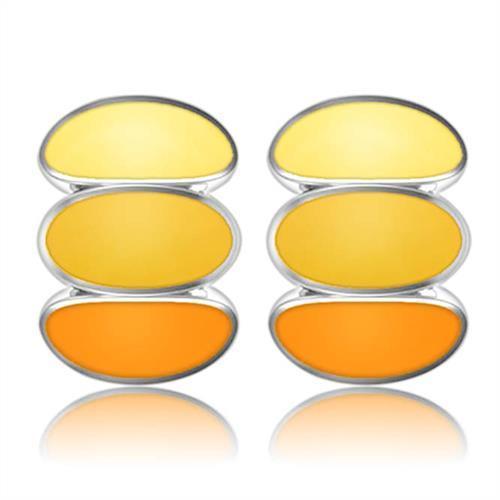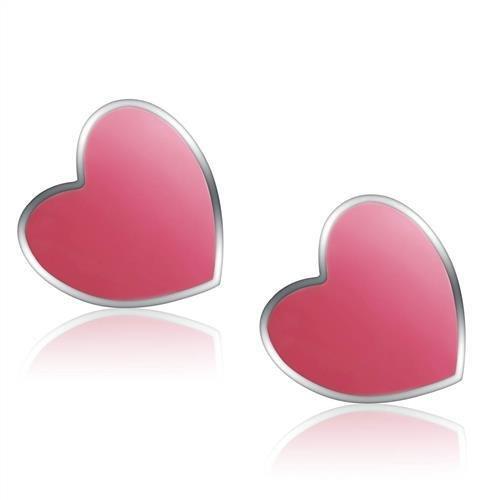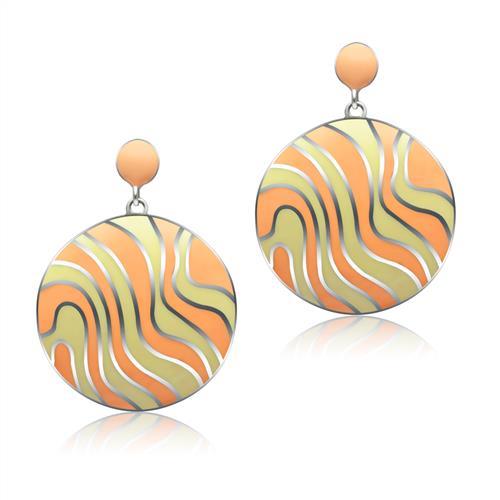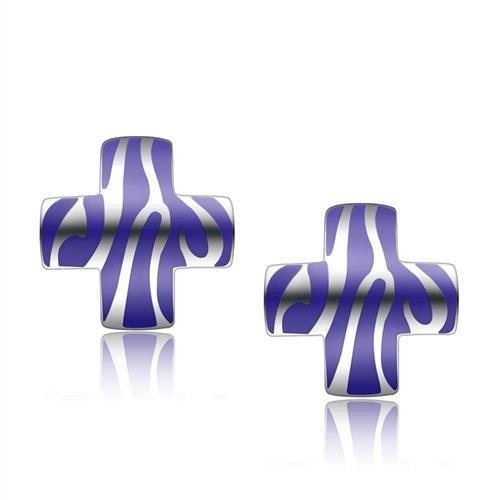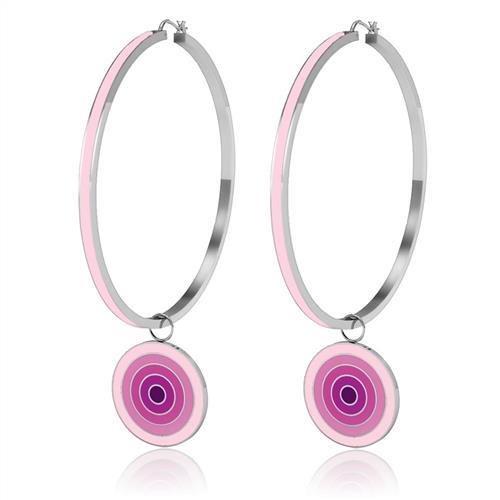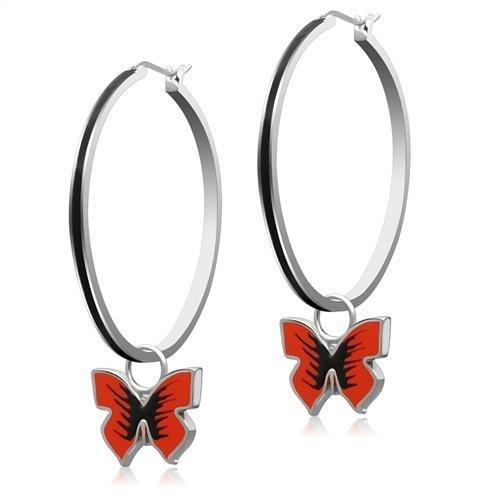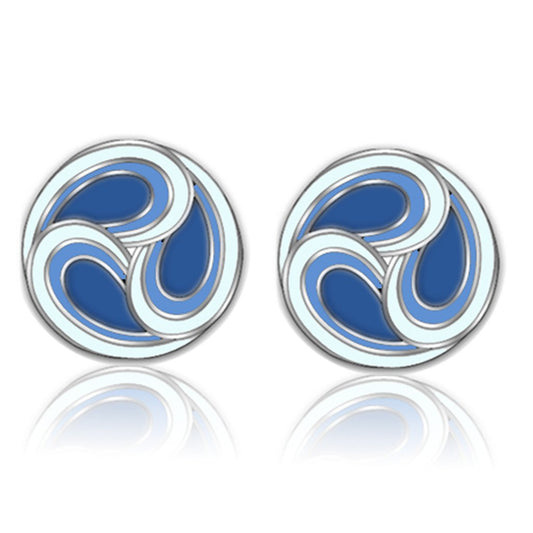So, is that gold-plated necklace you love made of real gold? The simple answer is yes, the gold itself is real, but that's not the whole story. Understanding what gold-plated jewelry truly is will help you buy smarter, care for your pieces properly, and know exactly what to expect from your accessories.
Is Gold Plated Jewelry Actually Real Gold?
Yes, the gold used in the plating process is absolutely real gold. However, it’s applied as an incredibly thin layer over a different, less expensive base metal, like stainless steel, brass, or copper.
Think of it like a beautiful cherry-red sports car. The paint is genuine, high-quality automotive paint, but that doesn't mean the entire car is made from solid pigment. It's a gorgeous coating on a sturdy frame. Gold-plated jewelry works the same way: it gives you the luxurious, solid-gold look for a fraction of the price. This makes it a fantastic and affordable choice for trying out new trends or expanding your collection without a hefty investment.
The key is to be an informed buyer. When you understand the process and materials, you can care for your pieces properly and set realistic expectations for their durability.
Understanding the Basics
To fully grasp what gold plating is, it’s helpful to see how it compares to other common types of gold jewelry. Each type has a different composition, which directly impacts its durability, value, and best use.
Gold Jewelry Types At a Glance
Here’s a quick comparison to clear up the main differences between gold jewelry types, from their composition and durability to their typical cost.
| Jewelry Type | Gold Content | Base Metal | Durability | Price Point |
|---|---|---|---|---|
| Gold Plated | A micro-thin layer of real gold (often <0.5% of total weight). | Typically brass, copper, or stainless steel. | Lower; best for occasional wear as it can tarnish or fade. | $ |
| Gold Vermeil | A thick layer of real gold (at least 2.5 microns). | Must be sterling silver. | Higher than standard plating; a durable mid-range option. | $$ |
| Solid Gold | The entire piece is made from a gold alloy (e.g., 14k or 18k). | Gold mixed with stronger metals like silver or copper. | Highest; designed for a lifetime of wear. | $$$$ |
As you can see, while the gold on a plated piece is authentic, its tiny quantity makes it more of a decorative finish than a core part of the jewelry.
For anyone looking for a step up in quality that's still affordable, gold vermeil is an excellent alternative. Its thicker gold layer and sterling silver base make it a much more durable option.
The demand for gold-plated jewelry keeps growing, especially for seasonal trends and affordable luxury gifts. Market analysis even shows search interest spikes during the holidays, proving it’s a go-to for expanding an accessory collection without breaking the bank.
How a Thin Layer of Gold Creates Your Jewelry
Ever wonder how gold-plated jewelry gets that stunning, flawless finish? It’s all thanks to a fascinating process called electroplating. It might sound complex, but think of it as giving a piece of jewelry a perfectly even, microscopic "bath" in real gold.
This process bonds a genuine layer of gold onto a more affordable base metal, like durable stainless steel or classic brass. At its core, electroplating uses a gentle electrical current to attract tiny gold particles from a solution and deposit them onto the jewelry. When done correctly, this forms a thin, beautiful, and surprisingly durable coating.
The Electroplating Process Step by Step
Creating a high-quality plated piece isn't as simple as just dipping metal in gold. It's a meticulous craft that requires precision. A rushed job leads to a finish that tarnishes or flakes off quickly, but a careful, multi-step process results in jewelry you can enjoy for years.
The infographic below breaks down the essential steps that go into crafting a quality piece of gold-plated jewelry.
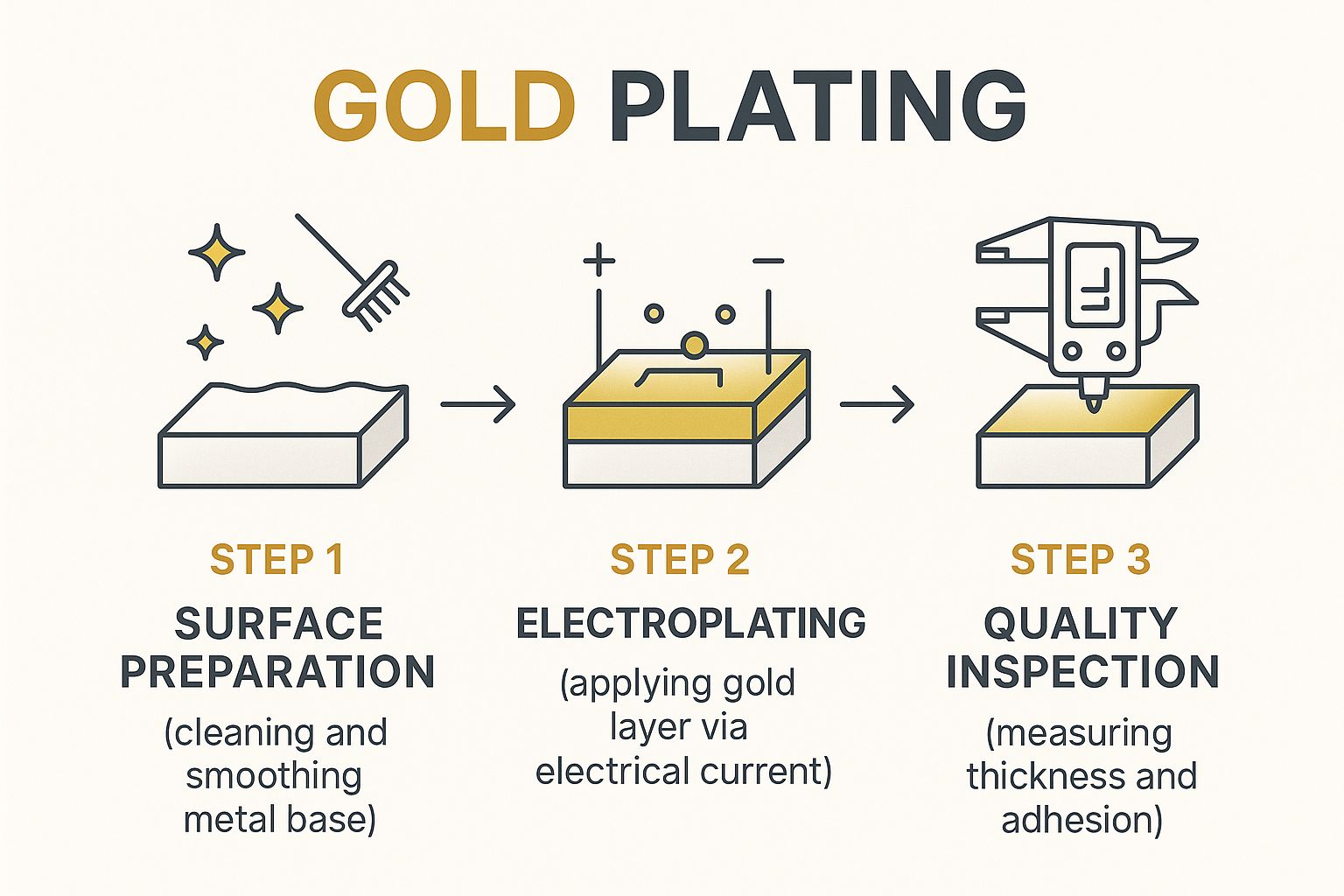
As you can see, the secret to a lasting finish starts long before the gold is applied. Proper surface preparation is the foundation for everything, and a final quality check ensures the piece you receive is built to last.
Why Plating Thickness Is Everything
So, what’s the single most important factor determining how long your gold-plated jewelry will last? The thickness of its gold layer. This is measured in microns—one-millionth of a meter. The rule is simple: the thicker the layer, the more resilient the piece will be against daily wear and tear.
Key Takeaway: A thicker micron count directly translates to better quality and a longer-lasting finish. When you shop, look for sellers who specify the micron thickness, as this indicates a higher-quality product.
Here’s a practical guide to what those numbers mean for you:
- Flash Plating (Under 0.5 microns): This is an extremely thin layer, common in costume jewelry. It provides the look of gold for a very low price but will wear off quickly with regular use.
- Standard Plating (0.5 - 1.5 microns): This is the sweet spot for most fashion jewelry. With proper care, pieces in this range—like many of the stylish necklaces and earrings at Precious Pulse Jewelry—can look great for a year or two, making them perfect for trendy items.
- Heavy Plating (2.5+ microns): This is considered high quality. This thickness is a requirement for any piece labeled "gold vermeil." It offers fantastic durability and is the best choice for items you plan to wear often, like rings or bracelets.
Ultimately, understanding the answer to "is gold plated real?" comes down to knowing this process. Yes, the gold itself is 100% authentic, but its longevity depends entirely on the quality and thickness of its application.
Comparing Gold Plated vs Solid Gold Jewelry
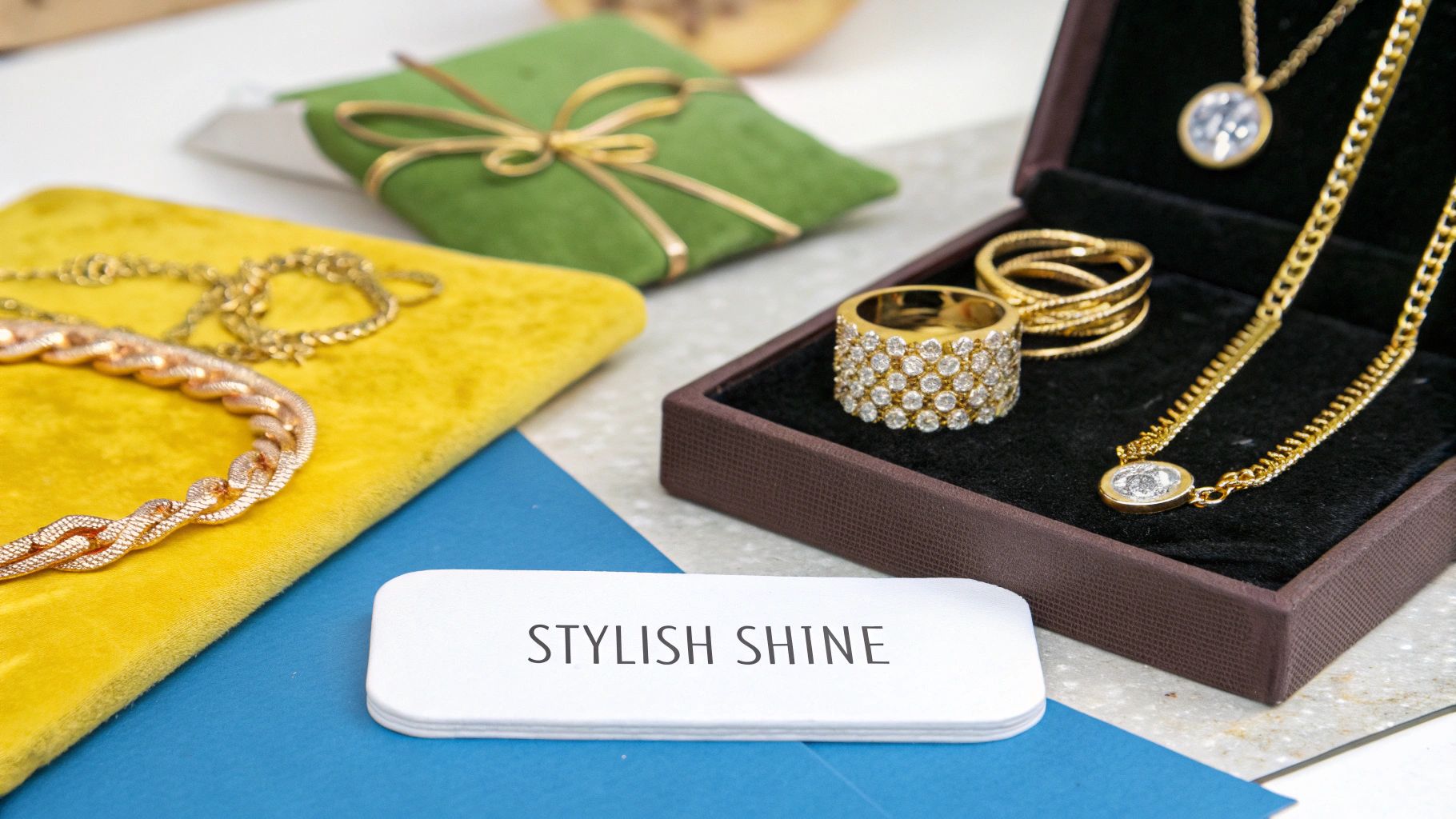
When you’re weighing gold plated against solid gold jewelry, you’re really choosing between affordability for trends and investment in longevity. One isn’t inherently “better” than the other; they just serve different purposes for your style, budget, and lifestyle. Understanding these core differences is the key to buying jewelry you’ll genuinely love.
Solid gold is, without a doubt, the champion of longevity and investment value. Because the entire piece is crafted from a gold alloy, it will not tarnish, fade, or have its color rub off over time. A 14k solid gold chain will look just as brilliant decades from now, making it a true heirloom piece.
Gold plated jewelry, on the other hand, is your ticket to affordably embracing the latest trends. Its value is in its style and accessibility. That whisper-thin layer of real gold gives you the luxurious look without the hefty price tag, letting you build a versatile and exciting collection.
Durability And Everyday Wear
The biggest practical difference you’ll notice is durability. Solid gold is tough enough for daily wear—it can handle water, sweat, and life’s little bumps without losing its integrity. This makes it the perfect choice for pieces you never take off, like a wedding band or a signature necklace.
Gold plated jewelry requires more mindful care. The delicate gold layer will eventually wear away with friction, especially on high-contact pieces like rings and bracelets. To give it the longest life possible, it’s best to take it off before you shower, swim, or hit the gym.
Key Takeaway: Solid gold is built for a lifetime of wear, while gold plated jewelry is designed for fashionable, more occasional use. Your choice should come down to how and where you plan to wear your new piece.
Long-Term Value And Cost
Solid gold holds its value because it’s made almost entirely of a precious metal. Think of it as a tangible asset you can wear, one that can be passed down or even resold. This inherent worth is naturally reflected in its much higher price tag.
By contrast, gold plated jewelry has virtually no resale value. The amount of actual gold is tiny—often less than 0.05% of the item's total weight. Its value is purely aesthetic, which is exactly what makes it a fantastic, budget-friendly option for experimenting with new styles.
Weight, Feel, And Maintenance
You can often feel the difference right in your hand. Solid gold is much denser and heavier than the common base metals used in plating, like brass or copper. A solid gold chain will have a satisfying heft to it, while a plated version will feel noticeably lighter.
Maintenance is another key differentiator. Solid gold can be easily polished to restore its original shine. Plated pieces need a much gentler touch—usually just a soft, dry cloth—to avoid accidentally stripping away the thin gold layer. If you're curious about another popular alternative, you can learn more about the difference between gold filled and gold plated jewelry in our detailed guide.
To help you see everything side-by-side, here’s a quick breakdown of what sets these two jewelry types apart.
Key Differences Gold Plated vs Solid Gold
| Feature | Gold Plated | Solid Gold |
|---|---|---|
| Composition | A thin layer of gold over a base metal (brass, copper, etc.) | A gold alloy through and through (e.g., 14k or 18k) |
| Durability | Lower; the gold layer can wear off with friction and time. | High; perfect for daily, lifelong wear. |
| Cost | Very affordable and budget-friendly. | Significantly higher initial investment. |
| Value | Primarily aesthetic value with minimal resale potential. | Holds intrinsic value as a precious metal asset. |
| Weight | Lighter feel due to the less dense base metal. | Heavier and denser, giving it a substantial feel. |
| Maintenance | Requires gentle care to protect the thin gold layer. | Can be professionally polished and cleaned easily. |
Ultimately, choosing between gold plated and solid gold comes down to your priorities. Are you building a timeless collection of forever pieces, or are you looking for stylish, affordable accessories to express yourself right now? Both have a beautiful role to play in any jewelry box.
How to Spot High-Quality Gold Plated Pieces
Navigating the world of gold plated jewelry can feel tricky. How can you tell the difference between a fleeting fashion piece and a durable, well-crafted item that will last? Once you know what to look for, you can confidently choose pieces that offer both stunning beauty and real value for your money.
The single most important factor is the thickness of the gold plating, which is measured in microns.
Think of it like painting a wall. One thin, rushed coat might look fine at first glance, but it won't stand up to scuffs and time. A thicker, multi-layered paint job gives you lasting protection and a rich finish. It’s the exact same with jewelry; a higher micron count means a more durable piece that resists fading and wear.
Decoding Jewelry Terminology
Your first step to becoming a savvy shopper is understanding the language jewelers use. These terms might sound similar, but they describe very different levels of quality and durability. Getting these straight will clarify exactly what you're buying.
- Gold Plated: This is a broad term for jewelry with a thin layer of gold (often between 0.5 to 1.5 microns) electroplated over a base metal like brass or stainless steel. It’s a fantastic choice for trendy, affordable accessories.
- Gold Filled: This is a significant step up in quality. A much thicker layer of gold is pressure-bonded to a base metal core, creating a far more resilient piece. The gold content is much higher than in plating, making it a great mid-range option that balances cost and longevity.
- Gold Vermeil: This is a premium category with strict standards. To be called "vermeil," a piece must have a sterling silver base and be plated with a thick layer of gold—at least 2.5 microns. This combination offers a luxurious feel, excellent durability, and is hypoallergenic for most people.
What to Check Before You Buy
Beyond terminology, a few practical checks can reveal the quality of a piece. Always consider the base metal, as it’s the foundation of the jewelry's longevity and determines if it's hypoallergenic.
- Best Base Metals: Sterling silver (as used in vermeil) and stainless steel are top choices. They are durable, hypoallergenic, and won't turn your skin green.
- Common Base Metals: Brass and copper are often used in lower-priced items. Be aware that these may react with your skin once the plating wears down.
If you need a hand telling different metals apart, check out our guide on how to tell if your gold is real gold for more tips.
Practical Tip: High-quality plating should look smooth, even, and consistent. Before buying, inspect the piece for any visible seams, bubbles, or discoloration. Pay special attention to clasps, joints, and edges, as these are the areas where poor craftsmanship often reveals itself.
By focusing on plating thickness, the base metal, and the overall finish, you can make informed choices. This knowledge empowers you to select beautiful pieces from collections like those at Precious Pulse Jewelry that align with your expectations for both style and durability.
Caring for Your Jewelry to Make It Last
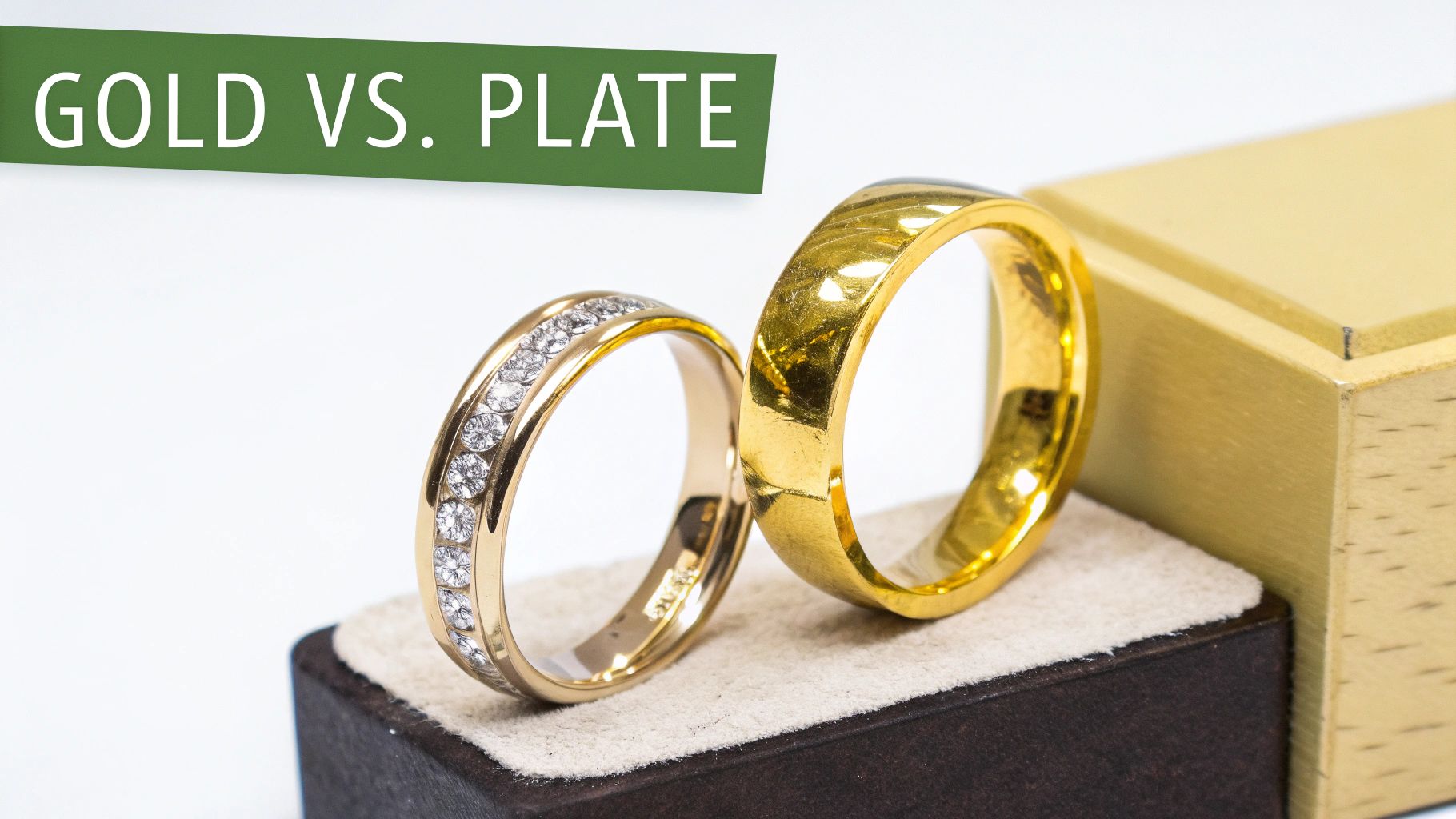
You’ve found the perfect gold plated piece—now, how do you keep it looking brilliant? The key is remembering that the thin layer of real gold needs a little extra care to protect it from daily life. With just a few simple habits, you can dramatically extend the lifespan of your favorite accessories.
The Do's of Gold Plated Jewelry Care
Think of your jewelry as the finishing touch. It should be the last thing you put on after lotions and perfumes, and the first thing you take off before bed.
- Clean Gently and Regularly: Use a soft, lint-free cloth (like a microfiber or lens cloth) to gently wipe your jewelry after each wear. This removes skin oils, makeup, and residue that can dull its shine.
- Store Smartly: Keep your pieces in a soft pouch, a lined jewelry box, or a separate zip-top bag. This prevents them from scratching against other items, which is one of the fastest ways to wear down the plating.
- Rotate Your Pieces: Avoid wearing the same plated item every single day, especially rings or bracelets. Giving your jewelry a "rest day" significantly reduces wear and tear.
Proper care is what turns a trendy piece into a long-lasting favorite. These techniques are similar to the efficient ways to care for gemstone jewelry, ensuring all your treasured items stay sparkling.
The Don'ts of Gold Plated Jewelry Care
The biggest enemies of that delicate gold layer are moisture and harsh chemicals. Simply avoiding them is the most effective thing you can do to preserve the shine.
Key Rule of Thumb: Your jewelry should never get wet. This means no showering, swimming, or doing dishes while wearing your plated pieces. Water won't just dull the shine; it can accelerate the breakdown of the gold layer.
Here are a few other crucial things to avoid:
- Chemical Contact: Keep your jewelry far away from perfumes, lotions, hairspray, and cleaning products. The chemicals in these items can react with the gold, causing it to tarnish or fade.
- Sweat and Exercise: Always remove your jewelry before working out. The salt and moisture in sweat are corrosive to the delicate plating.
- Harsh Polishing: Never use abrasive cleaners, polishing cloths designed for solid gold, or chemical jewelry dips. These are far too aggressive and will strip the gold layer right off.
As consumer interest in stylish, affordable accessories continues to rise, proper care has become more important than ever. The global jewelry market is projected to grow steadily, with a compound annual growth rate (CAGR) of around 5% from 2025 onward. Trends like personalized initial necklaces show a clear desire for expressive pieces without the high cost of solid gold, making well-cared-for plated jewelry a staple in modern collections.
By following these simple guidelines, you protect your investment in style. A little mindfulness goes a long way in keeping your beautiful and affordable pieces from collections like ours at Precious Pulse Jewelry looking their best.
Still Have Questions About Gold Plated Jewelry?
Even after getting the hang of what gold plating is, it’s natural to have a few more questions. Here are direct answers to some of the most common queries to help you choose, wear, and love your plated pieces with total confidence.
Can You Wear Gold Plated Jewelry Every Day?
While you can, it's not always recommended if you want it to last. Daily wear, especially for high-contact items like rings and bracelets, will accelerate the wear-and-tear on the thin gold layer.
Practical Advice: If you're looking for an everyday piece, choose one with heavy plating (2.5+ microns) or opt for a more durable alternative like gold-filled jewelry. For standard gold-plated items, consider them for more occasional wear or rotate them with other pieces in your collection to maximize their lifespan.
Will Gold Plated Jewelry Turn Your Skin Green?
This is a common concern, but it’s a myth that gold itself is the culprit. Gold will never turn your skin green. That harmless green tint is a chemical reaction between your skin's acidity and the base metal underneath, most often copper. This only happens after the protective gold layer has worn away.
How to Avoid It:
- Choose a Better Base: Opt for pieces with a hypoallergenic base metal like stainless steel or sterling silver (as in gold vermeil).
- Buy Quality: A thicker gold plating provides a stronger, longer-lasting barrier between the base metal and your skin.
- Keep it Dry: Follow the care tips above—avoiding moisture and chemicals is the best way to protect the plating.
How Long Does Gold Plating Actually Last?
There’s no single answer, as the lifespan depends entirely on three things: the thickness of the plating, the type of jewelry (a necklace will last longer than a ring), and how well you care for it.
Here’s a practical guide to what you can realistically expect:
General Lifespan Estimates:
- Flash Plating (under 0.5 microns): Found on very cheap costume jewelry, this may only last for a few wears before fading.
- Standard Plating (0.5-1.5 microns): With mindful care, these pieces can look beautiful for up to two years. This makes them perfect for trendy accessories.
- Heavy Plating / Vermeil (2.5+ microns): This is your most durable option. With proper care, these high-quality pieces can last for many years, offering a fantastic balance of cost and longevity.
Is Gold Plated Jewelry a Good Investment?
If you're defining "investment" by financial returns, then no. The amount of gold on a plated piece is incredibly small—often less than 0.05% of its total weight—so it has no resale or scrap metal value.
However, gold-plated jewelry is an excellent investment in your personal style. It provides the freedom to experiment with new trends, build a versatile accessory wardrobe, and enjoy the luxurious look of gold without the high cost. Its true value is measured in how beautiful and confident it makes you feel.
At Precious Pulse Jewelry, we believe everyone deserves to express their style with beautiful, high-quality accessories. Explore our collection of stunning and affordable gold plated jewelry today and find the perfect pieces to elevate your look. Your next favorite accessory is waiting.

